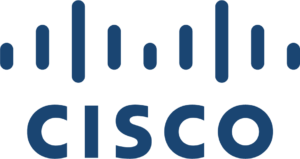Invited Session on Blockchain
Rosario Gennaro

Rosario Gennaro received his Ph.D. from the Massachusetts Institute of Technology in 1996, and was a researcher at the IBM T.J.Watson Research Center before joining City College in the Summer of 2012. His research focuses on cryptography and network security and more in general on theoretical computer science. His most recent works address the security of the cloud computing infrastructure, the issues of privacy and anonymity in electronic communication, and proactive security to minimize the effects of system break-ins.
Chris Wilmer

Chris is an assistant professor at the University of Pittsburgh in Chemical Engineering with a secondary appointment in Electrical and Computer Engineering. He acquired a B.A.Sc. degree from the University of Toronto in Engineering Science and a Ph.D. in Chemical Engineering from Northwestern University. He is co-founder and managing editor of the journal Ledger, the world’s first scholarly journal focused on blockchain research. His lab has an active project, funded by the National Science Foundation, in exploring the use of blockchain technology for enabling circular economies. At the University of Pittsburgh he also directs the Hypothetical Materials Lab, whose research focuses on advanced uses of porous crystals, such as in developing artificial noses or capturing carbon from the atmosphere.
Bina Ramamurthy

Dr. Bina Ramamurthy is the Director of Blockchain ThinkLab, University at Buffalo (UB). The Blockchain ThinkLab was created with funding from UB President’s Circle Club. For the past three years, she has been actively involved in blockchain education, research, and the development of decentralized applications. In the summer of 2018, she launched a four-course blockchain specialization on the Coursera platform for a worldwide audience. More than 75000 people have enrolled in the courses. The suite of courses has been highly ranked among the best courses to learn blockchain technology. She is currently writing a book Blockchain in Action (March 2020), Manning publishers. Dr. Ramamurthy, a recipient of 2019 SUNY Chancellor’s Excellence in Teaching Award, is a Professor of Teaching in the Department of Computer Science and Engineering, University at Buffalo, NY. She is also the Program Director of the SUNY-approved Nation Science Foundation (NSF) initiated Dataintensive Computing Certificate program. She has been the Principal Investigator (PI) on four NSF grants, a Co-PI on two NSF grants, and an investigator on seven Instructional Innovative Instructional Technology Grants (IITG) from SUNY. Bina Ramamurthy received B.E. (Honors) from Guindy Engineering College, Madras, the M.S. in Computer Science from Wichita State University, KS, and the Ph.D. in Electrical and Computer Engineering from the University at Buffalo, Buffalo, NY.
Anita Raja

Anita Raja is Professor of Computer Science at Hunter College and The CUNY Graduate Center. Professor Raja’s research contributions is in the field of distributed artificial intelligence with contributions in applications including WLAN resource management, tornado tracking, intelligence analysis and smart homes. Her current work is in the areas of machine learning for prediction of preterm birth and game theory for traffic network optimization. She recently developed and taught a course on Distributed AI and Blockchain Applications. She was also a contributor to ARUP’s comprehensive 2019 report on Blockchain and the Built Environment. Professor Raja is co-editor of the MIT Press book titled Metareasoning: Thinking about Thinking and has published more than 60 peer-reviewed articles in the area of distributed AI which has been supported by NSF, NIH, ONR, DARPA and DOD. She received a B.S. Honors in Computer Science with a minor in Mathematics summa cum laude from Temple University, Philadelphia in 1996, and a M.S. and PhD in Computer Science from the University of Massachusetts Amherst. She is a recipient of student-faculty research award in 2006, a best paper award in 2010 and in 2019 was named as one of 75 “Notable Women in Tech” in the Greater New York City area by Crain’s New York Business.
Qiang Tang

Dr. Qiang Tang is currently an Assistant Professor from New Jersey Institute of Technology, and also a Director of JD-NJIT-ISCAS Joint Blockchain Lab. Before joining NJIT, he was a postdoc researcher at Cornell University. His research interests span broadly in applied and theoretical cryptography and blockchain technology. Qiang was selected to MIT Technical Review 35 Innovators Under 35, China, 2019; he won a Google Faculty Research Award, 2019, and also an Asiacrypt Conference Paper Award 2016. His research was generously supported by NSF, DoE, AFRL, Google, JD, Filecoin, and several other blockchain foundations.
Invited Session on New IP
K. K. Ramakrishnan

Dr. K. K. Ramakrishnan is Professor of Computer Science and Engineering at the University of California, Riverside. Previously, he was a Distinguished Member of Technical Staff at AT&T Labs-Research. Prior to 1994, he was a Technical Director and Consulting Engineer in Networking at Digital Equipment Corporation. Between 2000 and 2002, he was at TeraOptic Networks, Inc., as Founder and Vice President.
K. is an ACM Fellow, an IEEE Fellow and an AT&T Fellow, recognized for his fundamental contributions on communication networks, including his work on congestion control, traffic management and VPN services. He has published over 280 papers and has 183 patents issued in his name. K. K. received his MTech from the Indian Institute of Science (1978), MS (1981) & Ph.D. (1983) in Computer Science from the University of Maryland, College Park, USA.
Keynote title: Are Network Layer Enhancements Needed for Supporting Emerging Applications?
Abstract: The Internet protocol suite has withstood numerous challenges that emerging applications have continually posed over the last several decades, and has admirably served the needs of our information driven society. The fundamental principles behind the design continue to serve us well even in these challenging times. Given this background, is there a reason to reconsider enhancements to the network layer in the context of even newer applications that are likely to emerge as we grow more and more dependent on networking.
I will discuss a few applications that are gaining traction that can be substantially helped by a network layer more responsive to application needs in terms of latency, flexible naming and service features. Vehicular applications, rich 360-degree video distribution and augmented reality are emblematic of such emerging applications, and I will discuss the network layer features that these applications could use to improve their capabilities.
Kiran Makhijani

Kiran Makhijani is Principal Research Scientist at Network Technologies Lab, Futurewei USA. Her current work involves exploration of the new internet architecture, technologies and protocols. It involves bringing relevant contributions to standards & research communities such as ETSI, ITU, IEEE, and ACM organizations.
In her current role, Kiran has helped develop the vision of Network 2030, mainly on new communication services and their performance targets. Her research areas cover all things networking such as cloud scale routing protocols, identity orientated networking, backhaul optimizations and network slicing. Prior to joining Futurewei, Ms Makhijani worked with Cisco and has led a broad array of industry projects in the forwarding and routing systems, designed scalable and reliable routing platform, policy-based routing and virtual network architectures.
Title: New IP: A Data Packet Framework to Evolve the Internet
Abstract: The IP is a primary data plane protocol on the Internet, which has several deficiencies when addressing the needs of modern digital society involving machine-to-machine communication and a remarkably enhanced user experience. New IP is an advanced network protocol specification to modernize the network layer without changing the fundamental Internet architecture. New IP envisions a new header format with 3 functional characteristics, i.e., shipping spec, contract spec, and payload spec. Using these fundamental blocks, New IP proposes a new data plane forwarding paradigm with far more advanced capabilities, such as ManyNets addressing, high precision services and qualitative communications.
Lijun Dong
Lijun Dong is a Research Architect at Futurewei Technologies, USA. She has broad and in-depth researches in the areas of Internet of Things, Machine-to-Machine communications, Information-Centric Networking and Future Internet Architecture for more than a decade. She has served for many international conferences: industry program chair of ICNC 2020; publicity chair of CSCN 2016; TPC co-chair of ICNC 2017, TPC member of Globecom 2011, ICNC 2012 and 2013, iThings 2013, ISCC 2017, 2018 and 2020, HiPNet 2018 and 2019, ICII 2018 and 2019. She was one of the board members of the WOCC conference for the year 2016-2018. She won the travel grant of Globecom 2009, InterDigital Innovation’s Awards in 2013, best paper awards in WOCC 2018 and AFIN 2018. She has been an active and influential contributor, and responsible for internal strategy development and execution for standards, including oneM2M, IETF, 3GPP and ITU. She is the major inventor to 50+ granted patents. She has 40+ publications and several book chapters. She is a senior member of the IEEE.
Title: Qualitative Communication Via Network Coding and New IP
Abstract: Qualitative Communication has been proposed to reduce the granularity of packet dropping due to congestion, from packet level to chunk level, which can significantly improve the user experienced latency and reduce the number of packet re-transmissions under the reliable transmissions. This paper proposes an approach to achieve Qualitative Communication by applying random linear network coding to chunks in packet payload. With the help of New IP framework, the network can efficiently perform packet wash in order to retain as many chunks in the packets as possible when congestion happens. The paper proposes several advanced features to further boost the benefits of this approach.
Lin Han

Lin Han has worked in communication industry for more than 20 years including New Bridge Network, Cisco System and Huawei USA. His career has been with the evolution development for data communication from Circuit switch to TDM/ATM network, then to IP based Internet.
He worked in European ETSI ISG NGP (Next-Generation Protocols) project from January 2016 to December 2019 and served as rapporteurs for working items “New Transport Technologies” and “Network Layer Multi-Path Support”. He has over 20 patents and several research publications (IEEE/IETF). He is a Principal Engineer at Futurewei Inc. now and focusing on the research for Future Network Technologies. His current interests are in the new architecture, protocols, solutions to solve new problems expected to be emerged in 5G and 5G beyond.
Title: Key technologies to realize the end-to-end guaranteed service for both bandwidth and latency for future network
Abstract: In the era of 5G and beyond, it is expected that more and more applications require end-to-end guaranteed services for bandwidth and latency. Current IP Internet cannot provide such services. New IP-based solution is needed to meet the new service requirements. This presentation will talk about a framework to support such guaranteed services. It is based on a scalable control protocol and a backward compatible data plan. The new control protocol could provide flow-based service negotiation and program hardware accordingly. The new data plane can guarantee different services for different flows with agreed Service Level Objectives, and can coexist with the traditional best effort and DiffServ services
Mohamed Faten Zhani

Mohamed Faten Zhani is an associate professor with the department of software and IT engineering at l’École de Technologie Supérieure (ÉTS Montreal) in Canada. His research interests include cloud computing, network function virtualization, software-defined networking and resource management in large-scale distributed systems. Faten has co authored several book chapters and research papers published in renowned conferences and journals including IEEE/IFIP/ACM CNSM, IEEE/IFIP IM/NOMS, IEEE INFOCOM, IEEE transactions on cloud computing and IEEE Journal on Selected Areas in Communications (JSAC). He served as the general or technical program chair of several international workshops and conferences. He is also co-editor of the IEEE Communications Magazine series on “Telecom Software, Network Virtualization, and Software Defined Networks”, associate editor of the IEEE Transactions of Network and Service Management, Wiley international journal of network management, and managing editor of the IEEE softwarization newsletter. He is co founder and vice-chair of the IEEE Network Intelligence Emerging Technology Initiative and a cluster lead at the IEEE P1916.1 SDN/NFV Performance standard group. Faten recently received the IEEE/IFIP IM 2017 Young Researchers and Professionals Award as a recognition for outstanding research contribution and leadership in the field of network and service management. More details are available on his web page: http://etsmtl.ca/Professeurs/mfzhani/Accueil?lang=en-CA
Keynote Title: FlexNGIA – Drawing the Architecture of the Next-Generation Tactile Internet
Abstract: From virtual reality and teleportation, to telepresence, augmented reality, holograms, and remotely controlled robotics, these future network applications promise an unprecedented development for society, economics and culture by revolutionizing the way we live, learn, work and play. Unfortunately, today’s Internet falls short when it comes to providing the stringent performance requirements imposed by such applications. This is due to several fundamental limitations in the design of the current network architecture and communication protocols. As a result, there is a pressing need to rethink the network architecture and protocols, and efficiently harness recent technological advances in terms of virtualization and network softwarization to design the Tactile Internet of the future.
In this talk, we start by analyzing the characteristics and requirements of future networking applications and highlight the limitations of the current network architecture and protocols. We then draw a rough sketch of FlexNGIA, a Flexible Next-Generation Internet Architecture that is able to satisfy the requirements of future Internet applications and services. We also discuss through some use-cases how FlexNGIA could ensure the service level guarantees required by some of the future network applications.
Zili Ning
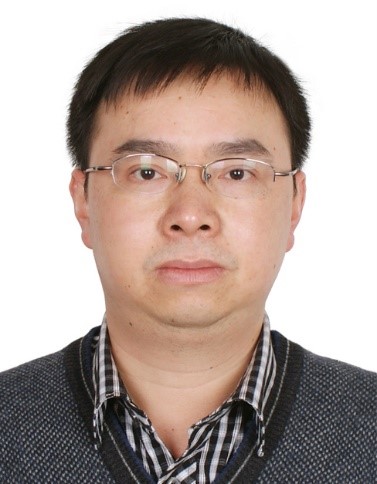
Zili Ning (Bradley) received the M.S degree in Communications Networks and Software from University of Surrey in 2017. He has more than 16 years experiences of telecom infrastructure network, IoT platform and strategic planning in the ICT industry. He is now pursuing his PhD in the area of network intelligence. His research interests include network functions virtualization, service function chaining, software-defined networking and artificial intelligence.
Title: Deep Reinforcement Learning for NFV-based Service Function Chaining in Multi-Service Networks
Abstract: With the advent of Network Function Virtualization (NFV) techniques, a subset of the Internet traffic will be treated by a chain of virtual network functions (VNFs) during their journeys while the rest of the background traffic will still be carried based on traditional routing protocols. Under such a multi-service network environment, we consider the co-existence of heterogeneous traffic control mechanisms, including flexible, dynamic service function chaining (SFC) traffic control and static, dummy IP routing for the aforementioned two types of traffic that share common network resources. Depending on the traffic patterns of the background traffic which is statically routed through the traditional IP routing platform, we aim to perform dynamic service function chaining for the foreground traffic requiring VNF treatments, so that both the end-to-end SFC performance and the overall network resource utilization can be optimized. Towards this end, we propose a deep reinforcement learning based scheme to enable intelligent SFC routing decision-making in dynamic network conditions. The proposed scheme is ready to be deployed on both hybrid SDN/IP platforms and future advanced IP environments. Based on the real GEANT network topology and its one-week traffic traces, our experiments show that the proposed scheme is able to significantly improve from the traditional routing paradigm and achieve close-to-optimal performances very fast while satisfying the end-to-end SFC requirements.
Uma Chunduri

Uma Chunduri is an IP routing expert with extensive R&D background and expertise in service provider networks, enterprise, mobile backhaul and broadband access networks with various technologies including IP/MPLS, IP FRR, IP Security/IKEv2, and cellular mobility. He is currently a Sr. Principal Engineer with the Future Networks core team at Futurewei (Huawei R&D USA), focusing on advanced technology research and standards. His current focus is on high-precision network architecture for low-latency and QoS-sensitive industry verticals, new forwarding planes to support these and transport network solutions for 5G/B5G cellular networks. Uma served as TPC Co-Chair of IEEE CSNM/HipNET 2018, 2019, IEEE/IFIP IM 2019 and organizer of several workshops. He is an active contributor at IETF in Routing, Transport, and Security Areas with 8 published RFCs and 15 Internet Drafts, as well as 50+ patents. He has several publications and participates in ITU-T FG-NET 2030 and as Rapporteur of NGP new routing mechanisms in ETSI. Prior to Huawei, Uma was with Kineto Wireless, NXP Semiconductors and Principal Engineer at Ericsson R&D, USA.
Title: 5G/B5G: Role of Fixed Networks (Transport Network Requirements, Challenges and Beyond)
Abstract: Apart from the stringent transport network requirements from 5G uRLLC, new mobility scenarios and rapid disaggregation in front/mid haul as well as core networks are putting unprecedented demands on 5G/B5G transport network infrastructure. While IP/MPLS technologies served well in the existing deployments the new requirements are pushing best-effort Internet technology to its limit. Some of the new requirements like low-latency, high-reliability, jitter, and zero-packet loss are critical for meeting the new service requirements for 5G/B5G. Even if edge computing is factored, lack of the above capabilities in the underlay transport network is an impediment for lot of the envisioned services in these networks.
This talk highlights the transport network routing and traffic engineering requirements in evolving X-Haul in 5G/B5G networks, gaps in existing matured underlays like IPv6/MPLS and highlights how some of the activities happening in various SDOs still fall short of core requirements. In order to address the new challenges, this talk focuses on long term research needed for Future Internet Data planes to bring high-precision services needed for 5G/B5G deployments. This talk also highlights, how newly proposed Internet data planes and transport like new IP architecture and protocols can be relevant Invited Session on Blockchain in this space.
Cedric Westphal

Cedric Westphal is a Principal Research Architect with Futurewei working on future network architectures, both for wired and wireless networks. His current focus is on next generation Internet. He was an adjunct assistant, then associate professor with the University of California, Santa Cruz from 2009 to 2019. Prior to Futurewei, he was with DOCOMO Innovations from 2007 to 2011 in the Networking Architecture Group focusing on next generation network architectures. He was at Nokia Research Center (now Nokia Bell Labs) from 2000 to 2006. He has received a MSEE in 1995 from Ecole Centrale Paris, and a MS (1995) and PhD (2000) in EE from the University of California, Los Angeles. From 1997 to 2000, he was a visiting researcher at Stanford University. Cedric Westphal has authored and coauthored over a hundred journal and conference papers, including several best paper awards at conferences such as IEEE ICC’11, IEEE ICNC’18, IEEE MuSIC’16 and others. He has been awarded over thirty patents. He has received the IEEE Communication Society IINTC 2018 Technical Achievement Award to “recognize a lifelong set of outstanding technical contributions in the area of information infrastructure and networking.” He was an area editor for the ACM/IEEE Transactions on Networking, an assistant editor for (Elsevier) Computer Networks journal, and a guest editor for Ad Hoc Networks journal and ACM/IEEE JSAC. He has served as a reviewer for the NSF, GENI, the EU FP7, INRIA, and other funding agencies; he has chaired the technical program committee of several conferences, including IEEE ICC (NGN symposium), IEEE NFV-SDN or IEEE IPCCC, and he was the general chair for IEEE INFOCOM 2016. He is a senior member of the IEEE.
Title: Transport Protocols for New IP
Abstract: New Internet transport protocols will be required to deliver new applications and to support the network protocols that IP will evolve into. This talk describes some new transport layer mechanisms to facilitate low latency communication. In particular, it looks at the relationship between the buffer depth within forwarding elements, the transport protocol, and the end-to-end delay performance.
Highspeed 5G: Industry Standards and R&D Progress
Xiang Liu

Xiang Liu is VP for Optical Transport and Access at Futurewei Technologies focusing on advanced optical technologies and industry development for optical transmission and access networks. Xiang has more than 20 years of experience in the optical communication industry. Before joining Futurewei, Xiang had been with Bell Labs working on high-speed optical transmission technologies. Xiang has a Ph.D. degree in Applied Physics from Cornell University. He has authored over 350 publications and holds over 95 US patents. He has served as a General Co-Chair of OFC 2018, and is currently serving as a Deputy Editor of Optics Express. Dr. Liu is a Fellow of the IEEE and the OSA.
Talk Title: Optical Fiber Communication Technologies in the 5G Era
Abstract:
Optical networks are supporting a wide range of communication services including residential services, enterprise services, and mobile services. The 5th-generation (5G) wireless brings to optical networking new requirements such as high bandwidth, low latency, accurate synchronization, and the ability to perform network slicing. All these requirements are being addressed by the so-called 5G-oriented optical networks. This invited talk aims to highlight the dramatic technological advances in optical fiber transmission and networking over the last few years and provide new perspectives on what to expect in the 5G era.
Gregory Wright

Gregory Wright received his bachelor’s degree in physics from Harvard University, his M.A. in mathematics from Cambridge University and his Ph.D. in physics from Princeton University. He did his postdoctoral studies at Bell Labs in millimeter wave astronomy, developing receiver systems operating at 230, 492 and 810 GHz. He was a researcher at Bell Labs from 1994 until 2001, after which he co-founded startups in network performance measurement and RFID systems. He joined Alcatel-Lucent Bell Labs (now Nokia Bell Labs) in 2010 as a member of wireless communication research, where he has worked on new approaches for antenna arrays, reconfigurable signal processing and wide dynamic range radios.
Talk Title: Where the Skies are Not Cloudy All Day, or How Will We Ever Move the Radio Access Network into the Data Center?
Abstract:
In the Fifth Generation wireless network, service providers have looked to cloud computing as a model for fast and cost-efficient development. So why haven’t we followed the lead of the software industry and moved almost all of the radio network into the cloud? This talk surveys the bottlenecks in communication and computation that keep us from getting to this goal. I also look at how we might “change the rules of the game” to get closer to a fully cloud based radio network.
Jun Shan Wey

Jun Shan Wey is Director of Fixed Networks Technology Strategy and Standards, ZTE TX Inc., USA
Talk Title: Optical Access Technologies for 5G xHaul Transport Network
Abstract:
Global 5G wireless technology and networks are being launched faster than originally anticipated. The underlying infrastructure supporting 5G transport must keep pace with the growing 5G deployments. Optical access technologies such as passive optical networks (PON) are potential cost effective solutions for 5G transport.
This presentation will begin with an overview of 5G fronthaul, midhaul, and backhaul networks, followed by a discussion of two critical requirements, bandwidth and latency. Summary of recent standards development activities in the ITU-T Q2/SG15 group will be presented. In particular, the recently released supplementary document G.Sup66 (5G wireless fronthaul requirements in a PON context) and the G.9806 recommendation (bi-direction point-to-point access) will be deliberated.
Kai Yang
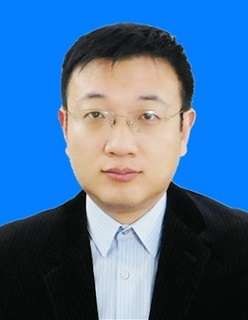
Kai Yang (Senior Member, IEEE)received Ph.D. degree from Columbia University, USA. He is a Distinguished Professor with Tongji University, Shanghai, China. He was a Technical Staff Member with Bell Laboratories, USA, a Technical Manager with Futurewei Technologies, USA, and a Research Associate with NEC Laboratories America, USA. He has also been an Adjunct Faculty Member with Columbia University since 2011. He holds over 20 patents and has been published extensively in IEEE leading journals and conferences. His current research interests include big data analytics, wireless communications, and signal processing. Dr. Yang was a recipient of the Eliahu Jury Award from Columbia University, the Bell Laboratories Teamwork Award, the Futurewei Technology Breakthrough Award, and the Future Star Award. He serves as an Editor for the IEEE Internet of Things Journal, IEEE Communications Surveys and Tutorials, and a Guest Editor for IEEE Journal on Selected Areas in Communications. From 2012 to 2014, he was the Vice-Chair of the IEEE ComSoc Multimedia Communications Technical Committee. He served as the Demo/Poster Co-Chair of IEEE INFOCOM, Symposium Co-Chair of IEEE GLOBECOM, and Workshop Co-Chair of IEEE ICME. He also severed as a TPC member for numerous IEEE conferences.
Talk Title: AIOPS in the 5G era
Abstract:
Entering the 5g era, communication network is becoming increasingly diverse and challenging to manage more than ever. To keep up with the growing scale and complexity of the pre-5G and 5G networks as well as the diverse services provided to various vertical industries, operators are relying on AIOps (artificial intelligence for IT operations) to identify, analyze, resolve, and prevent network issues such as service outages and QoE degradation. In this talk, we will first discuss the main challenges and key enabling technologies for 5G AIOps. We will then present two network anomaly detection algorithms based on machine learning with small data sets. The proposed methods exhibit strong empirical performance on real world dataset and considerably outperform other state-of-the-art algorithms.
NDN Realization Using Bloom Filter Variants
Hyesook Lim
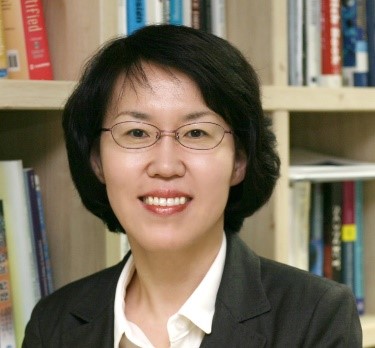
Prof. Hyesook Lim received the B.S. and M.S. degrees at the Department of Control and Instrumentation Engineering in Seoul National University, Seoul, Korea, in 1986 and 1991, respectively. She received the Ph.D. degree at Electrical and Computer Engineering from the University of Texas at Austin in 1996. From 1996 to 2000, she had been employed as a member of technical staff at Bell Labs in Lucent Technologies, Murray Hill, NJ. From 2000 to 2002, she had worked as a hardware engineer for Cisco Systems, San Jose, CA. She is a professor in Electronic and Electrical Engineering at Ewha Womans University, Seoul, Korea, where she does research on packet forwarding algorithms and hardware implementation of various network algorithms. She was the Dean of College of Engineering. She is currently the President of the Institute of Electronics and Information Engineers, which is the largest association of IT engineers in Korea, and she is also a member of the National Academy of Engineering of Korea.
Title: Introduction to Bloom filter variants
Abstract : This talk will cover a set of variant structures of a Bloom filter such as complement Bloom filter, ternary Bloom filter, functional Bloom-filter, and dual-load Bloom filter, and their applications to various network algorithms.
Hayoung Byun

Hayoung Byun received the B.S. degree at the Department of Electronics Engineering, Ewha Womans University, Seoul, Korea, in 2014. She is a Ph.D. candidate at the Department of Electronic and Electrical Engineering, Ewha Womans University, Seoul, Korea. She also studied Artificial Intelligence (AI) and Machine Learning (ML) as a visiting student at Carnegie Mellon University in 2019. She does research on Named Data Networking (NDN), Machine Learning (ML), packet classification, and Bloom filter-based architectures for various network algorithms. She is a student member of the IEEE.
Title: Using functional Bloom filters for name lookup in NDN
Abstract: Named data networking (NDN) technology has been proposed as a future Internet architecture for effectively handling this ever-increasing network traffic. In order to realize the NDN, high-speed lookup algorithms for a forwarding information base (FIB) are crucial. This talk describes a level-priority trie (LPT) and a 2-phase Bloom filter architecture implementing the LPT. The proposed 2-phase Bloom filter architecture is sufficiently small to be implemented with on-chip memories for FIB tables with up to 100,000 name prefixes. Hence, the proposed structure enables high-speed FIB lookup.
Jungwon Lee
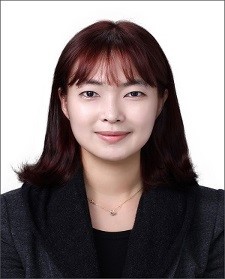
Dr. Jungwon Lee is research professor at Electronic and Electrical Engineering Department from Ewha Womans University. She has received a MS (2013) and Ph.D (2017) in Electronic Engineering from Ewha Womans University, Seoul, Korea. She had been worked as a post-doctor at the same University from 2017 to 2018. Her research interests include Named Data Networking (NDN), Blockchain, Physical Unclonable Function (PUF), and Bloom filter.
Title : Using Dual-load Bloom filter for name lookup in NDN
Abstract : The current Internet is based on a host-centric structure, and therefore does not efficiently transmit large capacity and repeatedly requested traffic. To solve this problem, various proposals for the future Internet have been made with the goal of overcoming inefficiencies caused by changes in the type of traffic currently being handled by the Internet. Named data networking (NDN) technology is a promising candidate for the future Internet. A name prefix trie (NPT) and the path-compression NPT (PC-NPT) should be implemented in off-chip memory because the number of content names stored in the FIB table is excessively large. We propose the use of a PC-NPT with a Dual-load Bloom filter (BF) for packet forwarding in NDN. The proposed BF allocates 2 bits per cell such that the cell can have one of four values: 0, 1, 2, and X. The proposed structure stores two information (skip value and name prefixes) in one Bloom filter, and each information is programmed as different values. When Bloom filter programs each information using two bits of memory per cell, different values can be set for each programming phase, making it possible to identify the exact meaning of the corresponding cell when queried.
Ju Hyoung Mun
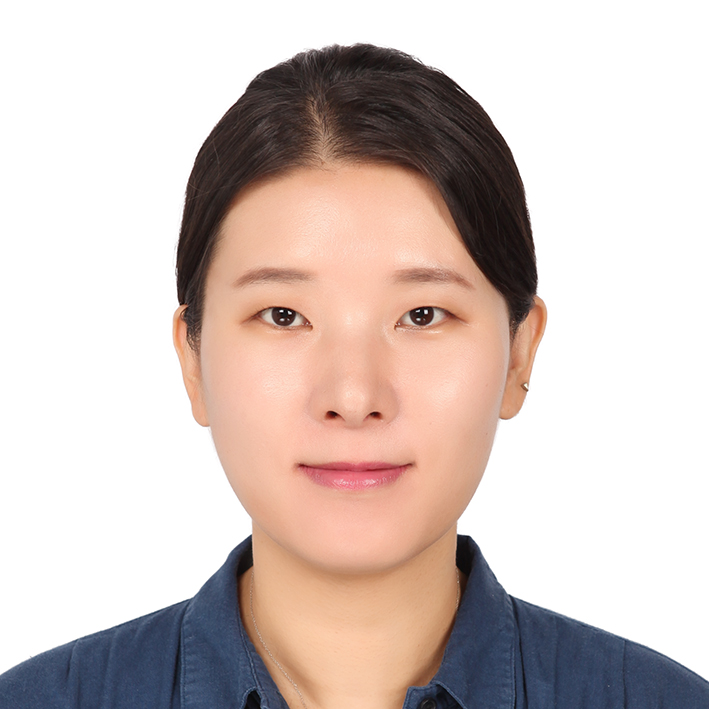
Ju Hyoung Mun is currently a postdoctoral associate in the Department of Computer
Science at Boston University, working with Prof. Manos Athanassoulis. She received
her Ph.D. in Electronic and Electrical Engineering at Ewha w. University in Seoul, Korea,
under the supervision of Prof. Hyesook Lim. Her doctoral research was focused on
how to retrieve the data efficiently by using Bloom filters in Named Data Networking
(NDN). Her research interest lies in the fields of Data Systems and Networking;
particularly, in enhancing the lookup performance.
Title: FIB Sharing and Cache Sharing using Bloom filters in NDN
Abstract:
The major portion of the Internet bandwidth is now being used for content distribution
like video streaming. The conventional Internet infrastructure, which is based on a
host-to-host communication model, is not efficient for content distribution. In order to
accommodate today’s communication needs, Named Data Networking (NDN) has
been introduced as a future Internet architecture. NDN technology has two main
characteristics: name-based content retrieval and in-network caching. There are many
research challenges for the realization of NDN. This talk presents two methods of
information sharing using Bloom filters in NDN: (1) Content Store sharing, which shares
cache summaries with neighboring routers to increase the diversity of cached contents
in a network as a whole, and (2) FIB table sharing, which reduces the traffic and the
size of the FIB tables.
Invited Speakers
Abbas Jamalipour
Abbas Jamalipour is the chair Professor of Ubiquitous Mobile Networking at the University of
Sydney, Australia, and holds a Ph.D. in Electrical Engineering from Nagoya University, Japan. He
is a Fellow of the Institute of Electrical and Electronics Engineers (IEEE), the Institute of
Electrical, Information, and Communication Engineers (IEICE), and the Institution of Engineers
Australia, an ACM Professional Member, and an IEEE Distinguished Speaker. He has authored
nine technical books, eleven book chapters, over 450 technical papers, and five patents, all in the
area of wireless communications. Dr. Jamalipour is the President and an elected member of the
Board of Governors of the IEEE Vehicular Technology Society. He was the Editor-in-Chief
IEEE Wireless Communications, Vice President-Conferences and a member of Board of
Governors of the IEEE Communications Society, and serves as an Editor of IEEE Access, IEEE
Transactions on Vehicular Technology, and several other journals. He has been a General Chair
or Technical Program Chair for a number of conferences, including IEEE ICC, GLOBECOM,
WCNC and PIMRC. He is the recipient of a number of prestigious awards such as the 2019
IEEE ComSoc Distinguished Technical Achievement Award in Green Communications, the
2016 IEEE ComSoc Distinguished Technical Achievement Award in Communications
Switching and Routing, the 2010 IEEE ComSoc Harold Sobol Award, the 2006 IEEE ComSoc
Best Tutorial Paper Award, as well as over fifteen Best Paper Awards.




